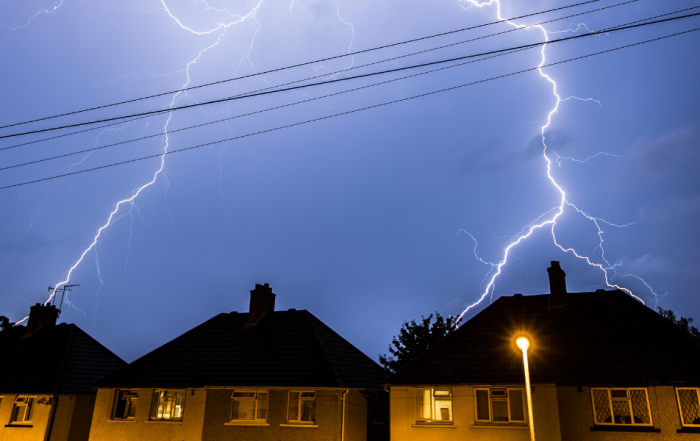BLOG
Post-Storm Chimney Safety Checklist for Louisville Homeowners

When severe storms sweep through the Louisville area, we know to check the roof, siding, and trees for damage. But one often-overlooked structure that takes a serious beating during heavy wind and rain? Your chimney.
As chimney professionals serving the greater Louisville and Southern Indiana area, we’ve seen firsthand how even moderate storms can cause hidden — and dangerous — chimney damage.
To keep your home safe and your fireplace ready for cooler nights ahead, follow this Post-Storm Chimney Safety Checklist.
Visually Inspect the Chimney Structure
After the storm clears, step outside and look at your chimney from the ground:
- Are there missing bricks or crumbling mortar joints?
- Is the chimney leaning or visibly cracked?
- Do you see any signs of soot or creosote streaks on the exterior?
These could all indicate structural compromise or water intrusion — both are serious safety issues.
Check the Chimney Cap and Crown
High winds or falling limbs can:
- Tear off or damage chimney caps.
- Crack the concrete chimney crown, which allows water to seep into your flue or masonry.
A missing or damaged cap invites rain, animals, and debris into your chimney — which leads to blockages, odors, and even chimney fires.
Look for Water Stains Inside the Home
Water from chimney leaks often shows up as:
- Brown or yellow ceiling stains near the fireplace.
- Damp walls or peeling paint around the chimney breast.
- Musty odors or mold growth.
These signs mean moisture is entering through a compromised chimney flashing or masonry — something that needs immediate attention.
Inspect the Firebox and Damper
Open your fireplace and:
- Check for debris, rust, or standing water.
- Test the damper — if it’s hard to open or rusted shut, water has likely entered the flue.
- Smell for sour or smoky odors, especially after wet weather.
If your firebox shows signs of water damage, there may be an issue with the flue lining, cap, or chase cover (for prefab systems).
Schedule a Professional Chimney Inspection
Not all damage is visible from the ground or without specialized tools. That’s why we recommend a Level 1 or Level 2 chimney inspection after severe weather.
Bonus Tip: Don’t Delay Repairs
Louisville weather is unpredictable — and a damaged chimney only gets worse with time. Small cracks turn into big leaks, and water damage can lead to expensive repairs, interior rot, or even chimney collapse.
We recommend having your chimney inspected every year — and immediately after major storms, especially if you have an older home in areas like the Highlands, Crescent Hill, or St. Matthews.
Need Help? Call Louisville’s Chimney Pros
At The Fire Place, we’re keeping chimneys safe across the Louisville metro area. Whether you need storm damage repair, a chimney rebuild, or just peace of mind before lighting your first fall fire, we’re here to help.
📞 Call us today at (502) 488-9999
🌐 Or schedule your inspection online.
Stay safe. Stay warm. Trust your local chimney experts.



